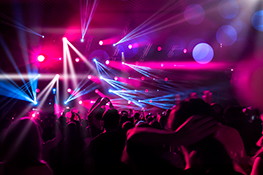Stage Lighting Fundamentals: A Comprehensive Beginner’s Guide
Welcome to the captivating world of stage lighting! Whether you’re a budding theatre enthusiast, a musician setting up your first gig, or simply curious about the magic behind dazzling stage productions, this guide will equip you with the fundamental knowledge to understand and appreciate the art of illumination.
Understanding the Basics of Stage Lighting
Stage lighting is more than just shining a bright light on the performers. It’s a powerful storytelling tool, capable of setting the mood, emphasizing key moments, and even shaping the audience’s perception of the performance. Understanding its core components is the first step to mastering this craft.
This section covers the essential elements, including:
- Light Sources: From incandescent bulbs to LED fixtures, we explore the different types, their advantages and disadvantages, and their applications in various stage productions.
- Fixtures: This includes spotlights, floodlights, wash lights, and more. We’ll discuss their beam angles, functionalities, and how to choose the right fixture for specific needs.
- Control Systems: From simple dimmers to complex consoles, we explain the different methods of controlling light intensity, color, and movement. This includes a look at DMX (Digital Multiplex) technology, a ubiquitous standard in professional lighting.
- Gels and Filters: These are crucial for modifying the color and intensity of light, allowing for creative control over the atmosphere and visual effects.
- Safety: Proper handling and safety precautions are paramount in stage lighting. This section covers essential safety practices and regulations to ensure a secure and accident-free environment.
The Art of Lighting Design: Principles and Techniques
Beyond the technical aspects, effective stage lighting relies heavily on artistic principles and established techniques. This section delves into the creative side of lighting, enabling you to translate your vision into a compelling visual experience.
Key concepts covered include:
- Motivation: The justification of light placement and design choices in relation to the story and setting.
- Color Theory: Understanding how different colors evoke specific moods and emotions, and how to use color effectively to enhance the storytelling.
- Intensity and Contrast: Mastering the use of light and shadow to highlight key elements, create depth, and guide the audience’s focus.
- Light Plots and Designs: Creating visual representations of your lighting scheme, planning fixture positions, and documenting your design.
- Special Effects: Exploring techniques like gobo projection, moving lights, and other special effects to enhance visual impact.
Practical Applications and Case Studies
This section bridges the gap between theory and practice. We’ll examine real-world applications of stage lighting principles across various performance contexts, illustrating how different techniques can achieve specific artistic goals. Case studies will analyze successful lighting designs and provide practical insights for your own projects.
Examples might include:
- Theatre Lighting: Exploring lighting techniques for different theatrical styles, such as realism, absurdism, or musical theatre.
- Concert Lighting: Understanding the unique challenges and techniques required for live music performances.
- Corporate Events: Adapting stage lighting principles for business presentations and corporate gatherings.
Choosing Your First Lighting Equipment
Stepping into the world of stage lighting can seem daunting. This section will guide you through the process of selecting your first lighting equipment, focusing on budget-friendly options and essential considerations for beginners.
We’ll discuss:
- Budgeting: Understanding the cost of different fixtures and accessories.
- Essential Equipment: Prioritizing the essential items for a basic lighting setup.
- Where to Buy: Finding reliable sources for quality stage lighting equipment.
Conclusion: Embark on Your Lighting Journey
The world of stage lighting is vast and constantly evolving, but with a strong understanding of the fundamentals, you can embark on a rewarding journey of creative exploration. This guide has provided a foundational framework; continue to learn, experiment, and refine your skills to become a master of this dynamic art form. Remember to always prioritize safety and explore the many resources available to deepen your knowledge and expertise.


 Auditorium Construction Services
Auditorium Construction Services 